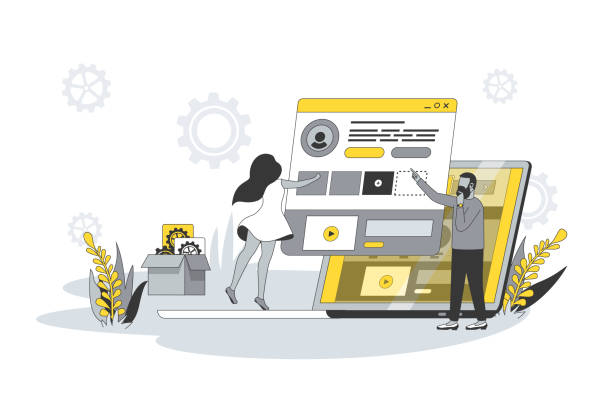Introduction to the World of E-commerce Website Design and Its Importance
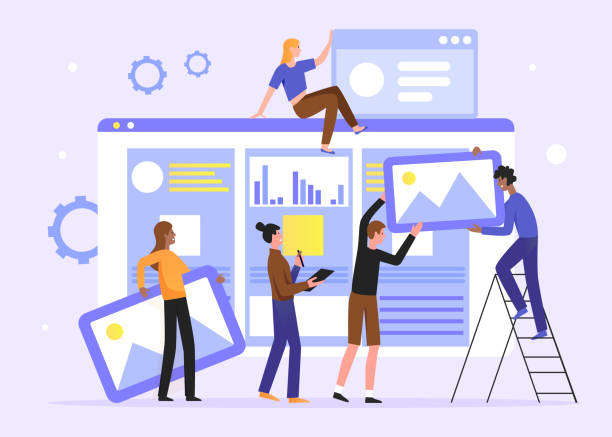
In the current digital age, e-commerce website design is no longer a luxury option, but a vital necessity for any business seeking growth and development in competitive markets.
This process not only allows you to offer your products and services to a wide range of customers worldwide, but also provides a platform for establishing deeper and more lasting relationships with them.
By entering the world of #e-commerce, businesses can put aside geographical and temporal limitations and operate 24 hours a day, 7 days a week.
This is especially important for small and medium-sized businesses looking to increase #online_sales and reduce operational costs.
A well-designed e-commerce website is your business’s digital storefront and can provide an unparalleled shopping experience for users.
E-commerce, as in e-commerce, is rapidly expanding, and this tutorial is for you to get acquainted with its basic concepts.
This comprehensive guide strives to cover all important aspects in this journey and provide a clear vision of what you need for success.
The importance of e-commerce website design lies in its ability to convert visitors into loyal customers.
Are you dissatisfied with your e-commerce website’s low sales?
Rasaweb is your solution for having a professional and high-selling e-commerce website.
✅ Significant increase in sales and revenue
✅ Easy and enjoyable shopping experience for customers
⚡ Get free consultation from Rasaweb right now!
Key Features of a Successful E-commerce Website
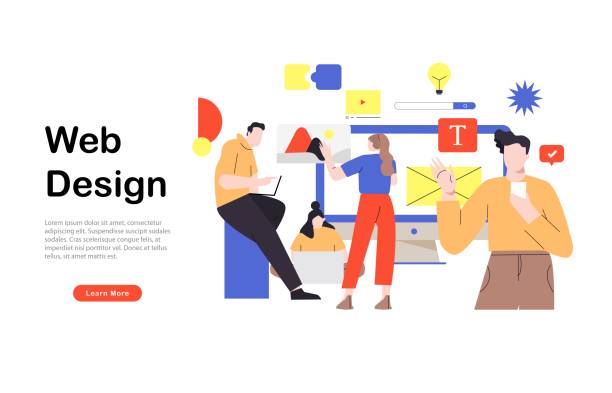
For an e-commerce website design to succeed, it must incorporate a set of key features that enhance user experience and contribute to business objectives.
The first and most important feature is a simple and user-friendly User Interface (UI) and optimized User Experience (UX).
Customers should be able to easily find their desired products, add them to the cart, and complete the payment process without complexity.
High loading speed is also critically important; slow websites can lead to customer loss.
Studies have shown that every second of delay in page loading can result in up to a 7% decrease in conversion rates.
Responsive Design, meaning the correct display of the website on various devices such as mobile, tablet, and desktop, is now a standard.
Given the increasing use of mobile for online shopping, ignoring this feature can cause serious damage to sales.
High security, especially for customer payment information, is vital.
Using SSL certificates and strong security protocols builds customer trust.
Furthermore, comprehensive descriptions and high-quality images for products, advanced search filters, user review sections, and diverse payment options all contribute to improving the shopping experience.
Providing explanatory content and analytical content about products can help customers in their decision-making.
Collectively, these features lead to a professional e-commerce website design that can make a statement in today’s competitive market.
Choosing the Right Platform for E-commerce Website Design
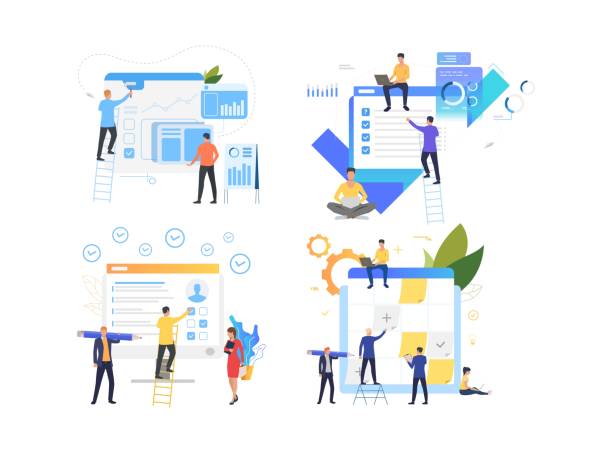
Choosing the right platform is one of the most important decisions in the e-commerce website design journey.
This decision not only affects costs and development time but also impacts future capabilities, scalability, and ease of management.
Various platforms are available in the market, each with its own advantages and disadvantages, and their selection depends on your business’s needs and budget.
Here, we provide thought-provoking content and specialized content to help you make the best choice.
| Platform | Advantages | Disadvantages | Suitable for |
|---|---|---|---|
| WooCommerce | High flexibility, thousands of plugins, large user community, full control over data | Requires more technical knowledge, hosting management, plugin costs | Small and medium-sized businesses with limited budgets and customization needs |
| Shopify | Ease of use, excellent support, managed hosting and security, built-in marketing tools | Fixed monthly costs, limitations on advanced customization, transaction fees (on basic plans) | Startups and businesses looking for a quick and hassle-free launch |
| PrestaShop | Free and open-source, suitable for medium-sized stores, many modules | Requires technical knowledge, limited number of free templates, community support | Medium-sized businesses looking for a free and powerful solution |
| Custom Design | Unlimited flexibility, high scalability, unique design, full control | Very high initial cost, long development time, need for an in-house technical team | Large companies with very specific needs and high budgets |
Every platform has its strengths and weaknesses.
For instance, WooCommerce is an ideal choice for those who use WordPress, as it easily integrates with it, giving you full control over your site.
On the other hand, Shopify, with its simplicity and quick setup, is very suitable for beginners and those who do not want to get involved in technical issues.
Ultimately, successful e-commerce website design begins with choosing a platform that aligns with your business’s long-term and short-term goals.
This vital step requires thorough research and evaluation to ensure the right investment.
The Importance of User Experience (UX) and User Interface (UI) in Online Stores
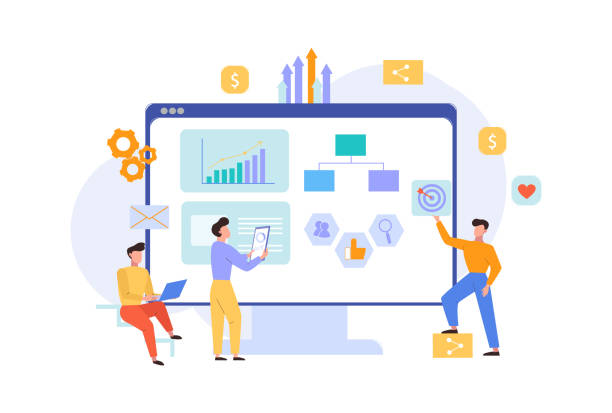
In the process of e-commerce website design, User Experience (UX) and User Interface (UI) are two inseparable and vital elements that determine the success or failure of an online store.
UI refers to the look and feel of a website; it includes colors, fonts, layout, and all visual elements with which the user interacts.
In contrast, UX refers to the overall user experience when using the site; is the site easy and enjoyable, or confusing and frustrating? An attractive UI design can be the first step to capturing customer attention, but a powerful UX keeps the customer on the site and guides them towards a purchase.
A website with good UX should have high loading speed, intuitive navigation, mobile compatibility, and a simple purchase process.
This guidance will help you understand how, with an e-commerce website design that pays special attention to UX/UI, you can increase your conversion rate.
For example, adding advanced search capabilities, precise product filters, and diverse sorting options can significantly improve the user experience.
Also, clearly displaying customer reviews and providing personalized recommendations can help customers in the decision-making process and also add a sense of enjoyment.
Ultimately, an e-commerce website design that prioritizes UX and UI not only increases sales but also greatly contributes to building customer loyalty and strengthening the brand.
Does your current corporate website present a worthy image of your brand and attract new customers?
If not, turn this challenge into an opportunity with Rasaweb’s professional corporate website design services.
✅ Significantly improves your brand’s credibility and image.
✅ Smooths the path for attracting leads and new customers for you.
⚡ For a free and expert consultation, contact Rasaweb right now!
SEO for Increasing Traffic and Sales of an E-commerce Website
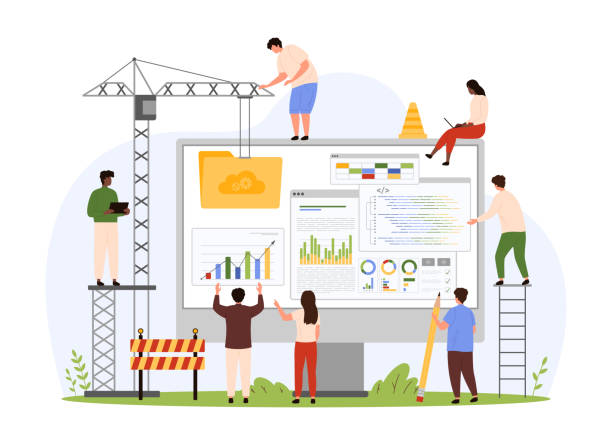
After the e-commerce website design process is complete and your store is ready to welcome customers, the next crucial step is to ensure its visibility.
SEO (Search Engine Optimization) is a process that helps your website achieve a higher ranking in the search results of Google and other search engines.
This means increasing organic traffic and, ultimately, increasing sales.
For an e-commerce website, SEO is doubly important because it directly affects the visibility of your products and services.
SEO training for online stores includes extensive topics that must be carefully considered.
The first step in e-commerce website SEO is comprehensive keyword research.
You need to find the words that your potential customers search for to find similar products.
These keywords should be strategically placed in product titles, descriptions, meta descriptions, and URLs.
Optimizing product images with appropriate naming and using Alt tags improves site speed and also helps in image search.
A logical internal linking structure and the creation of high-quality, explanatory content for product pages and blogs increase your site’s credibility.
Also, ensuring that your site is mobile-friendly and has high loading speed, are among the important On-Page SEO factors.
Acquiring high-quality backlinks from reputable sites (Off-Page SEO) also helps increase your site’s credibility and ranking.
Overall, an e-commerce website design without a strong SEO strategy is like having a beautiful shop in the desert.
Investing in SEO is an investment in the future of your online store.
Payment Gateways and Transaction Security in E-commerce Website Design
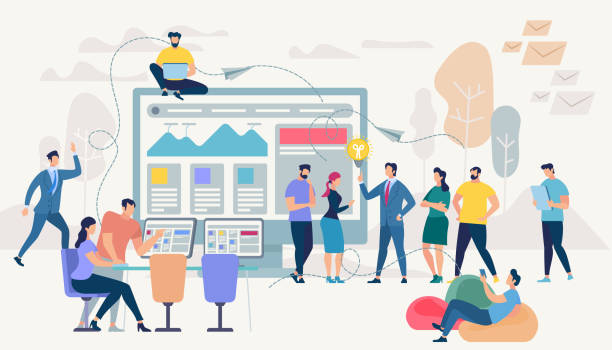
One of the most sensitive stages in e-commerce website design is the integration of payment gateways and ensuring transaction security.
Customers must trust your payment system for online purchases, and this trust is achieved only by providing a secure and seamless payment experience.
The availability of diverse and reliable payment options not only simplifies the purchase process for customers but also increases your store’s credibility.
Direct and indirect payment gateways are among the options available to you.
Direct gateways (such as domestic bank gateways) usually require specific licenses and a more complex administrative process but may have lower fees.
Indirect gateways (such as Zarinpal, IDPay, or internationally PayPal and Stripe) have a faster setup and act as an intermediary between you and the bank.
The choice of gateway depends on the type of business, transaction volume, and audience preferences.
The most important aspect in this section is the security of customer financial information.
Using an SSL (Secure Sockets Layer) certificate, which is indicated by a green padlock next to the site address, is an absolute necessity.
SSL encrypts information between the user and the server, preventing data theft.
Furthermore, compliance with PCI DSS standards is mandatory for stores that process credit card information.
Providing news and specialized content regarding website security measures can help increase customer trust.
An e-commerce website design with a secure payment system encourages customers to complete their purchases and prevents legal issues and loss of credibility.
Marketing Strategies After E-commerce Website Design
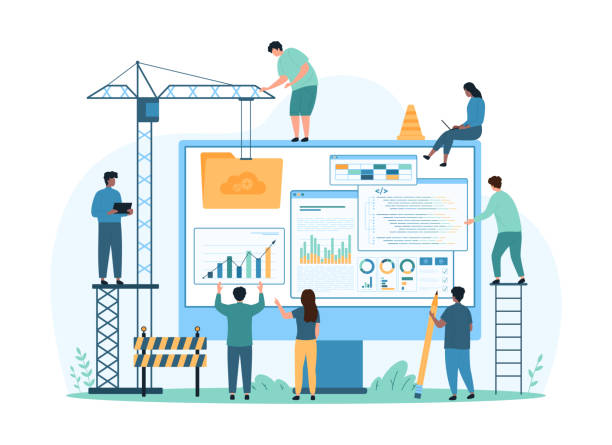
After the e-commerce website design process is complete and your store is ready to welcome customers, the next and very important stage is to formulate and implement effective marketing strategies.
An excellent website without proper marketing is like a shining gem in the dark that no one sees.
The goal of marketing is to attract targeted traffic to your site, convert this traffic into customers, and ultimately, retain them as loyal customers.
| Strategy | Short Description | Importance |
|---|---|---|
| Content Marketing | Creating valuable content (blog, video, infographic) to attract and inform the audience. | Increased organic traffic, brand credibility, customer engagement. |
| Social Media Marketing | Active presence on platforms like Instagram, Telegram, LinkedIn to communicate with the audience and promote products. | Increased brand awareness, direct sales, two-way communication. |
| PPC (Pay-Per-Click) Advertising | Using platforms like Google Ads to display ads in search results and on other websites. | Quick access to target audience, precise budget control, measurable results. |
| Email Marketing | Collecting customer emails and sending newsletters, discounts, and personalized content. | High return on investment, direct communication with customers, increased loyalty. |
To achieve the best results, you must utilize data analysis and continuously monitor your campaigns’ performance.
Analytical content regarding campaign performance can help you improve future strategies.
Furthermore, creating a fun element in marketing campaigns can help attract more audience and build an emotional connection with the brand.
A successful e-commerce website design can only reach its true potential with consistent and continuous marketing strategies.
Maintenance, Support, and Continuous Updates for E-commerce Websites
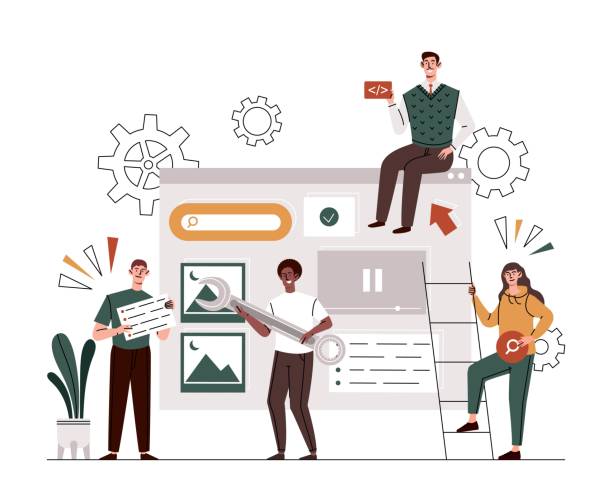
After the e-commerce website design and launch are complete, your work is not over; it has just begun.
Maintenance, support, and continuous updates are the three main pillars for ensuring the smooth operation, security, and long-term success of an online store.
An e-commerce website that is not properly maintained will, over time, face technical issues, security vulnerabilities, and a poor user experience, all of which lead to reduced sales and customer loss.
Regular reviews and troubleshooting are the first steps in maintenance.
This includes checking for broken links, missing images, and performance glitches.
Regular platform updates (e.g., WordPress and WooCommerce or Shopify), themes, and plugins are highly important, as these updates often include security fixes and performance improvements.
Ignoring them can expose your site to cyberattacks.
Providing expert guidance for support can be very beneficial.
Regular data backups (both files and databases) are also an absolute necessity.
In case of any serious issue, having backups allows you to quickly restore your site and prevent the loss of valuable data.
In addition, monitoring site security using security tools and web firewalls, preventing Brute Force and SQL Injection attacks are other vital measures.
Customer support services, whether via online chat, email, or phone, are essential for answering customer questions and resolving issues.
This e-commerce website design can only reach its full potential when continuously maintained and updated to ensure an always-optimized user experience.
Is your company’s website as professional and trustworthy as it should be? With specialized corporate website design services by Rasaweb, create an online presence that represents your credibility and attracts more customers.
✅ Building a powerful and professional image for your brand
✅ Converting visitors into real customers
⚡ Get a free consultation right now!
Common Mistakes in E-commerce Website Design and Management
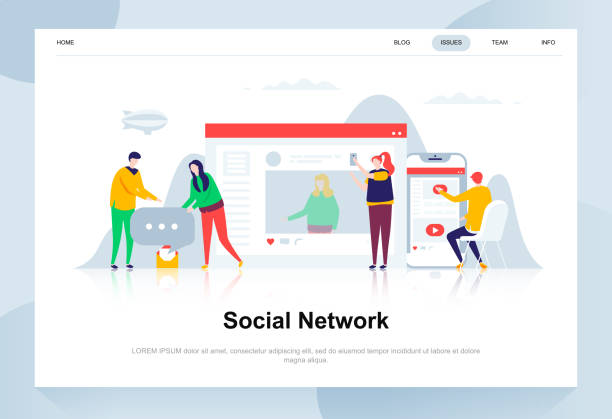
In the process of e-commerce website design and management, there are common mistakes that can render your efforts and investment fruitless.
Awareness of these mistakes and avoiding them can make a significant difference in the success of your online store.
One of the biggest mistakes is ignoring User Experience (UX).
If your site is complex, slow, or unusable, customers will quickly leave it.
Many businesses focus on the site’s appearance and overlook the importance of easy navigation and a smooth purchase process.
This is a thought-provoking point as to why some give less importance to UX.
Another mistake is not having a responsive mobile version or a weak one.
Given that a large portion of internet traffic comes from mobile devices, a site that does not display correctly on mobile loses a great opportunity.
Insufficient investment in SEO is also a major error.
Without SEO, search engines will not find your site, and consequently, potential customers will not find you either.
Insufficient descriptions and low-quality product images are another factor that can harm sales; customers cannot touch the product, so they need complete visual and textual information.
Not offering diverse payment options and low security leads to customer distrust and cart abandonment.
Furthermore, neglecting the importance of after-sales customer support results in the loss of loyal customers.
An e-commerce website design without attention to these details will, at best, be a beautiful storefront without customers.
Learn from this explanatory and analytical content and do not repeat common mistakes.
Future and New Trends in E-commerce Website Design
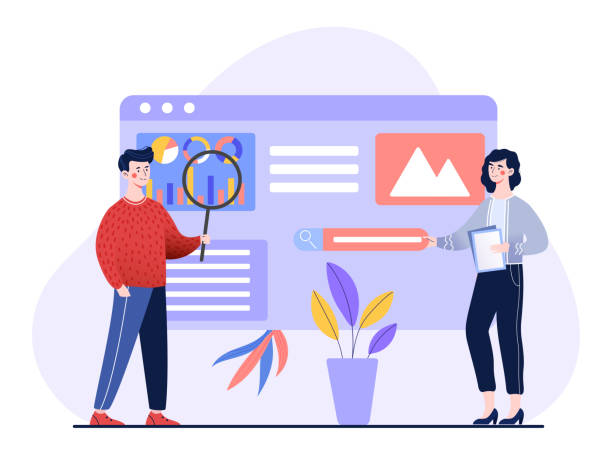
The world of e-commerce is rapidly changing and evolving, and with it, the trends in e-commerce website design are undergoing massive transformations.
For your online store to remain competitive and successful in the future, it is essential to be aware of these trends and be prepared to adapt to them.
This section, in a news-based and analytical manner, introduces some of these new trends.
One of the most important upcoming trends is Personalization.
Customers expect a fully personalized experience; from product recommendations based on purchase history to site content tailored to their interests.
Artificial intelligence and machine learning play a key role in achieving this.
Artificial Intelligence (AI) has also found increasing application in other areas such as customer support chatbots, search process optimization, and inventory management.
Augmented Reality (AR) and Virtual Reality (VR) are also changing how online shopping is experienced.
Customers can view products in their real environment (e.g., furniture in their living room or clothes on their body), which helps reduce return rates and increase trust.
Voice Search and Voice Commerce have gained more importance with the growth of voice assistants like Siri and Google Assistant.
E-commerce websites should be optimized to respond to these types of searches.
Headless Commerce is also a trend where the visual layer of the site (frontend) is separated from the logical and management section (backend), providing high flexibility and scalability for large businesses.
For a forward-looking e-commerce website design, considering these trends and investing in them will allow you to stay one step ahead of the competition.
Frequently Asked Questions
| Question | Answer |
|---|---|
| What is e-commerce website design? | The process of building and developing a website for selling products or services online. This includes user interface design, user experience, content management system implementation, payment gateway, and inventory and order management. |
| What features should a good e-commerce website have? | Excellent user interface and user experience, high loading speed, strong security (especially for payments), attractive and complete product display, advanced search and filter capabilities, easy and fast shopping cart and payment process, mobile compatibility (responsive), and customer support. |
| What platforms can be used for e-commerce website design? | Various platforms are available such as WooCommerce (on WordPress), Shopify, Magento, PrestaShop, or even custom systems developed by design companies. The choice of platform depends on the needs, budget, and business volume. |
| How important is SEO in e-commerce website design? | The importance of SEO in e-commerce websites is very high. SEO helps your products and site pages achieve a better ranking in Google and other search engine results, attracting more targeted traffic, which directly leads to increased sales. |
| How much does e-commerce website design cost? | The cost varies depending on various factors such as design complexity, required features, platform choice (ready-made or custom), product volume, and additional services like SEO and support. It can range from a few million Tomans for simpler sites with ready-made templates to tens or even hundreds of millions of Tomans for large and custom sites. |
And other services of Rasaweb Advertising Agency in the field of advertising
The role of interactive advertisements in attracting loyal customers of pet supply manufacturers
Investigating the impact of mobile advertising on industrial advertisements of pet supply manufacturers
How to use personalized advertisements to attract target customers of pet supply manufacturers
The role of realistic advertisements in increasing sales of pet supply manufacturers
Investigating the impact of digital media on industrial advertisements of pet supply manufacturers
And over a hundred other services in the field of internet advertising, advertising consultation, and organizational solutions
Internet Advertising | Advertising Strategy | Advertorial
🚀 Transform your business’s digital presence with Rasaweb’s internet advertising strategies and advertorials.
📍 Tehran, Mirdamad Street, next to Bank Markazi, Southern Kazeroun Alley, Ramin Alley, No. 6

